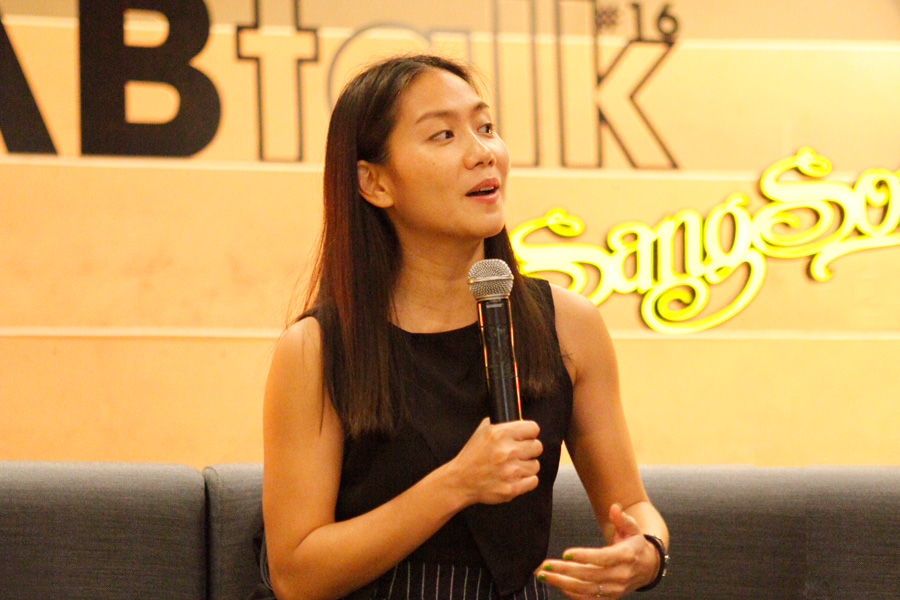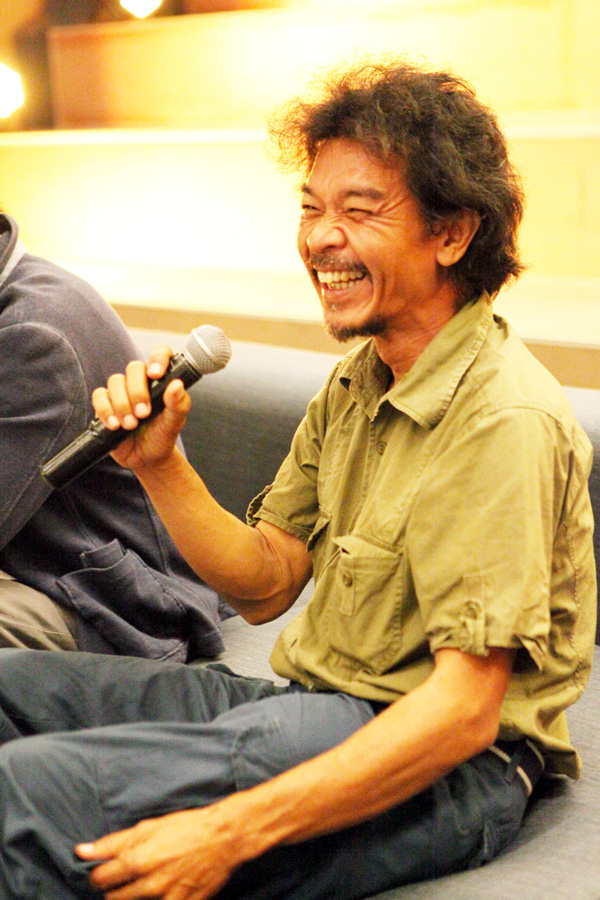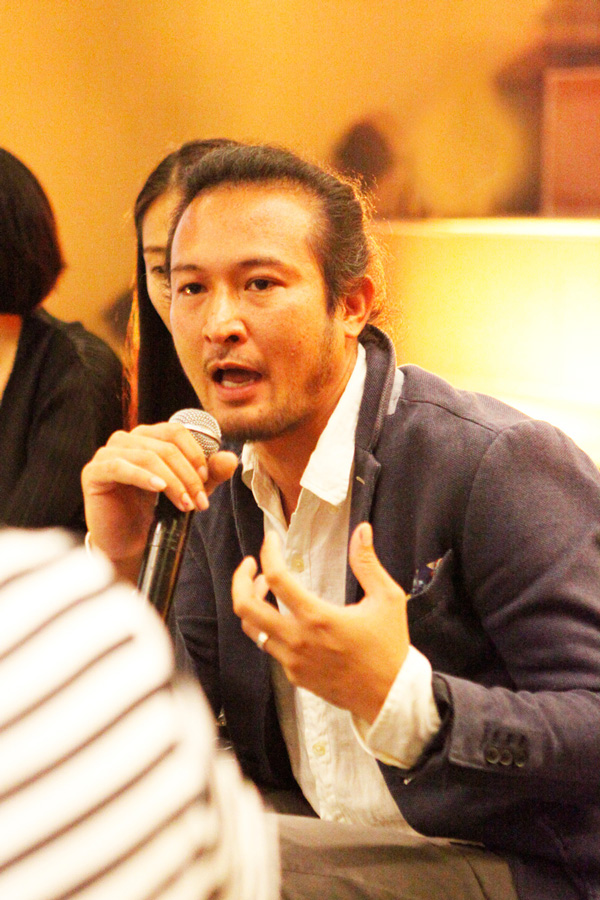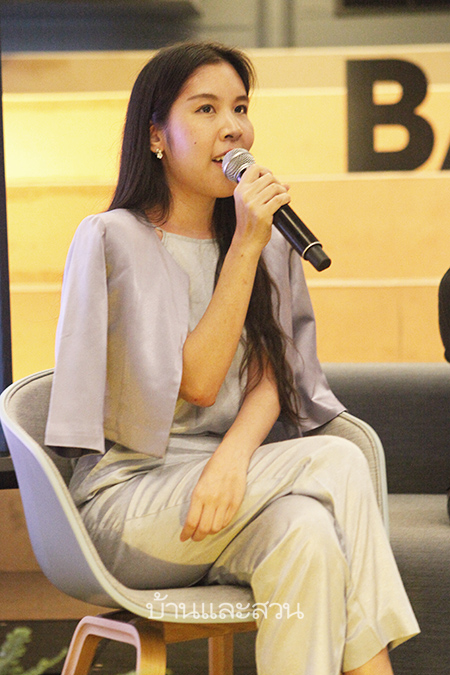“Beyond Bliss” and “The Joy of Art” are catchphrases for Bangkok Art Biennale 2018, so it’s natural to look at how these 75 artists from 33 countries interpret “happiness” according to their own experience. Some depict happiness by taking ownership of it: see the works of Choi Jeong Hwa. Some show it through a lens of conflict, suffering, sadness, struggles for survival, or immigrant problems. Each work takes a different approach, offering perspectives on “happiness” we’ve never seen before.
Following up on this, we looked back to a seminar held last September at Warehouse 30, the 16th BAB Talk, where the 5 renowned Thai artists Tawatchai Puntusawasdi, Sanitas Pradittasnee, Dujdao Vadhanapakorn, Torlarp Larpjaroensook, and Kawita Vatanajyankur discussed the topic “So, Can Art Really Create Happiness?” Here are some samples of how each answered this question.
Dujdao Vadhanapakorn

“Art can create more than happiness. As a child I wasn’t a good student. I couldn’t do much of anything, wasn’t much good at anything. The classroom felt like the absolute wrong place and the wrong way for me. But when we put on a dance for the New Year’s party, or when the teacher called me up to dance in front of the class, it felt really good! The art of dance teaches me how to be myself every day. It teaches the feeling of true happiness and gives it a tangible form.”
Tawatchai Puntusawasdi

“Our art works are evidence of time: that is, they indicate how well we have used our time. In any case, a finished art work emerges as a tangible piece that communicates our ideas. We may well define the word “happiness” differently, but I think if we as artists are happy with a piece of art we’ve created, viewers will pick up on that feeling and learn from it.”
Sanitas Pradittasnee

“As someone who likes to look at art, that is, speaking from the standpoint of a viewer, when I see something unexpected in a work of art my heart fills with a great feeling, as I’ve been given something new to learn. A truly good art work can take us on a path into another world, seen through the eyes of the artist who created it. I want my art to communicate the substance of things that inspire people, to spark something in others, so I really have to say that art actually can create happiness, and has done so throughout time, to this very day.”
Torlarp Larpjaroensook

“When someone comes to see my art and it brings out a connection to a time of their own happiness, it makes me very happy. Both happiness and sorrow are definitely there to be seen in art, but for me, happiness is the greater. That’s what makes me want to get up in the morning and get right to my art, it’s great fun.”
Kawita Vatanajyankur

“Artists are able to create happiness in themselves and others. The things that give me the greatest happiness are, first of all, being able to work with my mom, who is my manager and photographer, and secondly, my art teaching me how to cope with life’s hardships and care for my own spirit. As for giving happiness to others, I feel my work is a kind of mouthpiece for the “little people,” such as laborers, helping society to be more aware their value. Just that, the ability to help other people, gives me more happiness from creating art.”
Our interviews with these 5 artists show that many concepts about art and creativity are shared among themselves and with other world-class artists. Marina Abramović’s view extends beyond the happiness of the individual artist to the artist’s audience and to world society in general. In a major seminar at Siam Pavalai Royal Grand Theater in Siam Paragon Marina put it this way: “Art should imitate and promote positive emotions. It should encourage each of us to be a better person, and in the end society will be the better for the art which accomplishes that.”
Regardless of how you personally define “happiness” or “art,” or if you’re still wondering if art can really create happiness, right now more than 200 art works from 75 artists worldwide are visiting us here in Bangkok, Thailand. To answer those questions all you have to do is step out, go see the art for yourself. Where to start? What to see? Check it out by taking a little time to study 30 not-to-be-missed works at Bangkok Art Biennale 2018.


